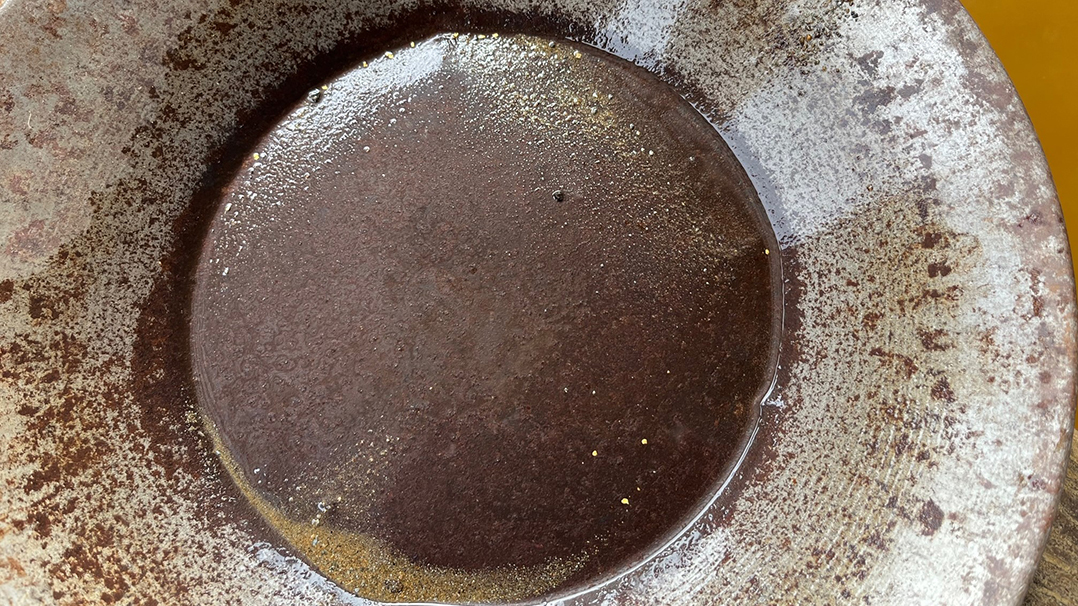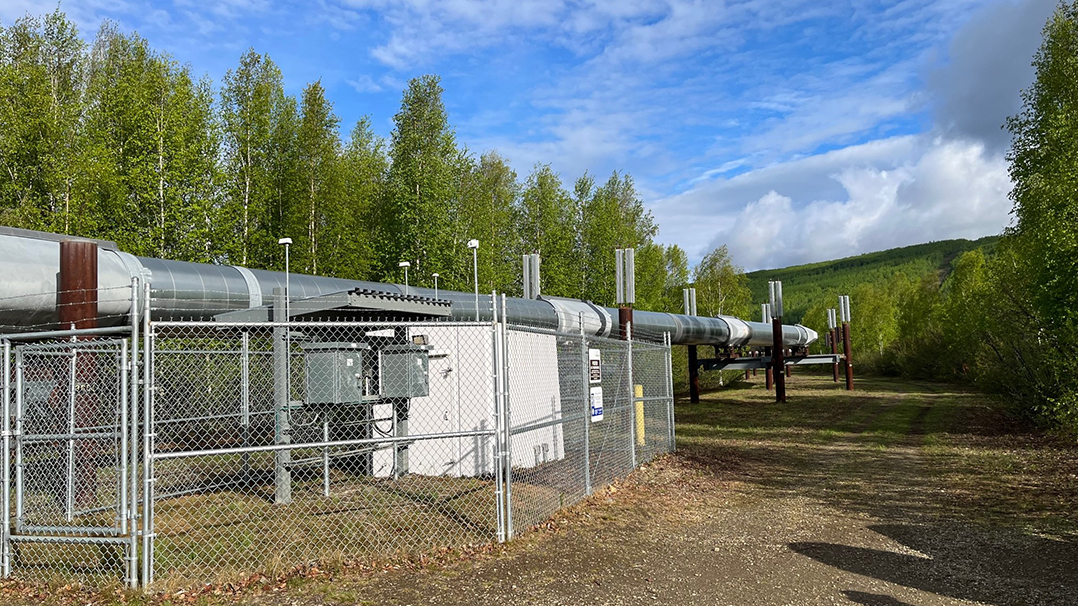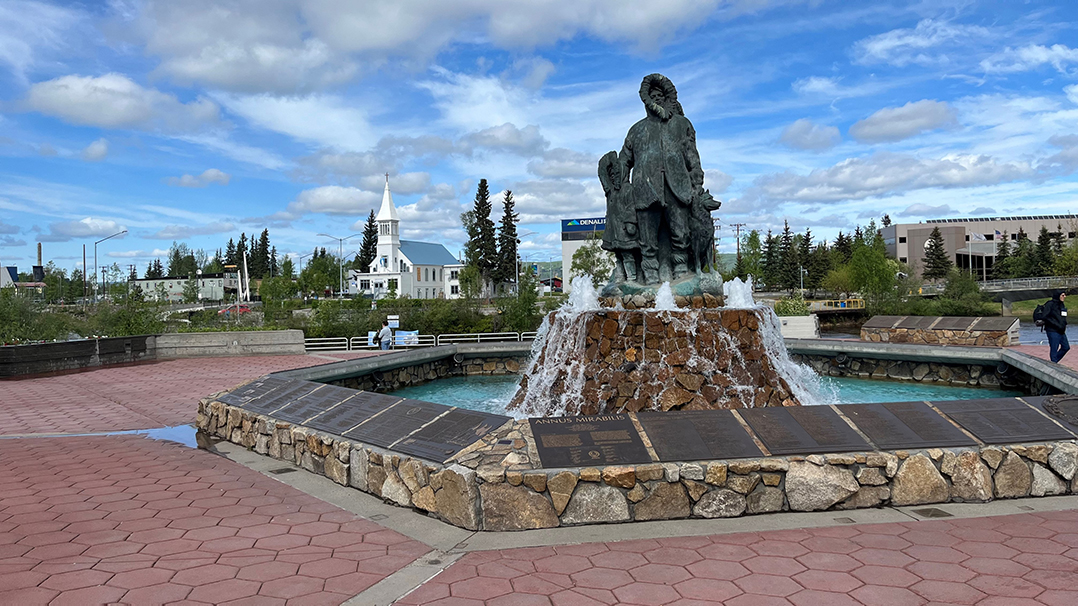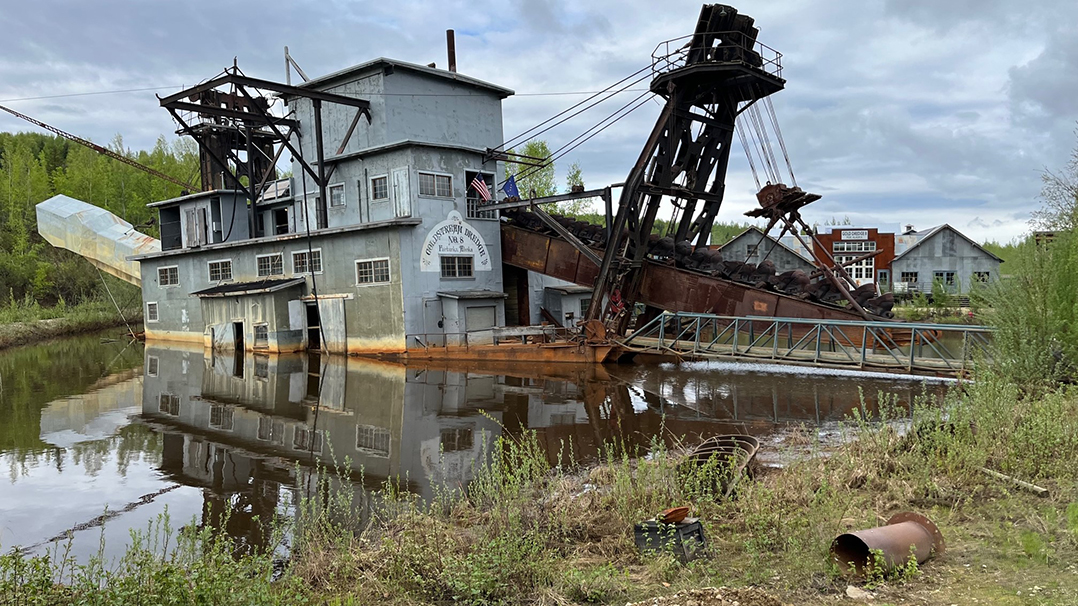Today, we begin a tour of Alaska with the first of two stops in Fairbanks, the northern-most city in the United States, about 100 miles south of the Arctic Circle.
In 1901, E. T. Barnette established Fairbanks as a trading post, trading with the native Athabascan people. After Felix Pedro, an Italian immigrant, found gold in a nearby stream in July 1902, prospectors began coming to Fairbanks, named for Indiana Sen. Charles Fairbanks, later United States vice president. Miners dug 100-foot-deep shafts in the permafrost to reach ancient stream beds and then constructed horizontal drifts along the gold seam. By 1905, the Fairbanks Mining District supported 10,000 prospectors, panning for gold on 1,500 streams.
After a fire in 1906 destroyed most of the town, it was rebuilt with more substantial one- and two-story buildings, many of which survive. By the 1920s, individual miners, called “drifters,” were replaced by dredges that mechanically separated gold from sand and gravel. In the 1950s, most gold mining operations ceased when the dredging process became uneconomical. During the building of the 800-mile Trans-Alaska Pipeline system in the 1970s, Fairbanks, located near the mid-point of the pipeline, became a major supply center for workers and materials.
Today, Fairbanks is city of about 30,000 residents, who contend with temperatures as low as 50 degrees below zero in the winter and as high as 100 degrees in the summer. Winter visitors come to see the northern lights. Summer visitors can ride a reconstructed mining train to Goldstream Dredge No. 8, retired in 1959 after producing gold today worth about $15 billion. Visitors are instructed in gold panning techniques and most walk away with a few dollars’ worth of gold flecks. Visitors to the dredge can also observe a section of the Trans-Alaska Pipeline that rises from the ground nearby.







